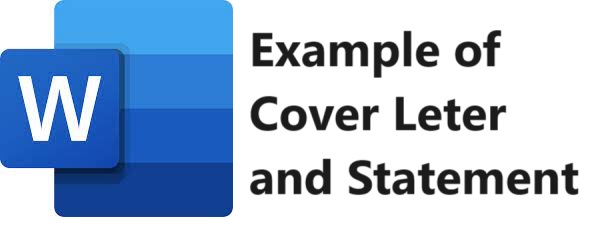Author Guideline
AUTHOR GUIDELINE
Authors can use the template provided in the OJS as a guide. Starting in Vol 10 (2022) edition, Acta Pharmaciae Indonesia: Acta Pharm Indo will change from a conventional publication model to a continuous publication model. It allows the immediate publication of an article as soon as it is ready for publication and does not have to wait until a particular issue of the journal is completed. In addition, the article will be published in English or in Bahasa Indonesia with Abstract in English. The author may also submit articles in Bahasa Indonesia and published article in English, but will be charged translations in accordance with terms and conditions.
As part of the submission process, authors are required to check off their submission's compliance with all of the following items, and submissions may be returned to authors that do not adhere to these guidelines: The submission has not been previously published, nor is it before another journal for consideration (or an explanation has been provided in Comments to the Editor).; The submission file is in OpenOffice, Microsoft Word, or RTF document file format.
Please also submit the cover letter (can be filled out in "Comments for the Editor" column when submitting the article or uploaded in addional document) that outlines the significance of the research with a list of at least three potential reviewers who are experts in the subject matter of their manuscript (the list should include the reviewer's name, affiliation, email address, and a brief justification).
Each part of the article that you need to submit will be described briefly in this section:
Article Title
The title represents the contents of the article (specific, effective, and informative). If the article is written in a language other than English, it must be accompanied by a translation of the title in English.
Name of author and correspondence
The author's name (without academic degree), the address of the institution where the research activity was conducted (name, address, zip code, and country of the institution), and corresponding author (phone, fax, and e-mail address). It is highly recommended to use the institution's official domain of email address.
ABSTRACT
Abstract is written in English (mandatory) and/or Indonesian which describe the article concisely. A structured abstract has the following section: Introduction, Objectives, Methods, Results, Conclusions. Abstract should not exceed 250 words.
Keywords/Keywords:
Keywords are to reflect the concepts contained in the article and do not need to include the words that are already in the article title. These keywords will be used for indexing purposes. Please, provide a maximum of 5 keywords.
INTRODUCTION
State an adequate background, research objectives, problems underlying the research, and theoretical reviews. Use active sentences instead of passive sentences and don't hesitate to use the word "we".
MATERIALS AND METHODS
Make it in subtitles. The subtitle "Materials" or "Tools" does not need to be made separately, but merges into the ‘Experimental procedures’. Provide the manufacturer's name for the material eg (Toyobo, Japan) and the tool's brand name eg (Thermo, Germany). End with the subheading “Statistical analysis”: What statistics were used, the software used including product and company names, as well as how significant (p-value). Use the passive voice for this part.
RESULTS
Make it in subtitles. Do not hesitate to use the word "we". Make it in active sentences. Explain a figure or graph, don't leave the reader to make their own interpretation.
Provide your data either in the form of graphs or figures. For graphs, include the raw data in the bottom of the page as an attachment.
FIGURES
Place the caption below the figures and adjust to 10 font size, followed by a brief description of how to get the result. Include any abbreviations that appear on the graphs/figures. Please, provide the figure with high resolution. For figures that compare between two groups, mark a line between groups and a star according to statistical significance. Statistical analysis is also mentioned in the figures’ captions.
TABLE
Tables should be created with a word processor and cited consecutively in the text. Provide a title above the tables and adjust to 10 font size, followed by a description and abbreviations below that appear in the tables. Only horizontal lines of three lines are allowed, i.e. two lines flanking column headings and the bottom line.
DISCUSSION
In the first paragraph, indicate the significance of the research. The following paragraphs are analysis and synthesis. The acuity of analysis and synthesis includes at least a description of the findings of the work, profound discussion, and critical comparison with the work of others.
CONCLUSION
The conclusion(s) should clearly explain the main findings and be drawn from the previous sections (results and discussions). It concludes and provides broad generalizations and the creation of new theories, rather than containing the superficial conclusion(s).
REFERENCES
Please ensure that every reference cited in the text is also present in the reference list. Use primary sources available online (journal articles) from credible sources such as PubMed (minimize use of book references). Use the most recent references (last 10 years). Use a reference manager eg Workspace, Mendeley, Zotero (include doi articles from the referenced library). Avoid using libraries from predatory journal sources.
The format used is (format PLoS or Plos one) the numeric brackets inline citations [1]; [1-3] , for example:
Inline citations:
[1]
[3]
[1–3]
Bibliography:
1. Hisakata R, Nishida S, Johnston A. An adaptable metric shapes perceptual space. Curr Biol. 2016;26: 1911–1915. doi:10.1016/j.cub.2016.05.047
2. Hogue CWV. Structure databases. 2nd ed. In: Baxevanis AD, Ouellette BFF, editors. Bioinformatics. 2nd ed. New York, NY: Wiley-Interscience; 2001. pp. 83–109.
3. Sambrook J, Russell DW. Molecular cloning: a laboratory manual. 3rd ed. Cold Spring Harbor, NY: CSHL Press; 2001.
ACKNOWLEDGMENTS
Write acknowledgments to those who contributed to the research or writing, for example someone who provided the reagents/materials or writing assistance. Write down the funder and the contract number.
THE AUTHOR'S CONTRIBUTION
State the contribution of each author. For example, the editorial team: Anton and Budi designed this research; Anton, Budi and Charlie contributed to data collection; Anton and Charlie wrote the first script; Anton, Budi and Charlie contributed to the statistical analysis; and all authors contributed to data interpretation and approved the final version of the manuscript.
OTHER NOTES: number each line of the initial manuscript, by clicking: Layout > Line Numbers

1.png)








